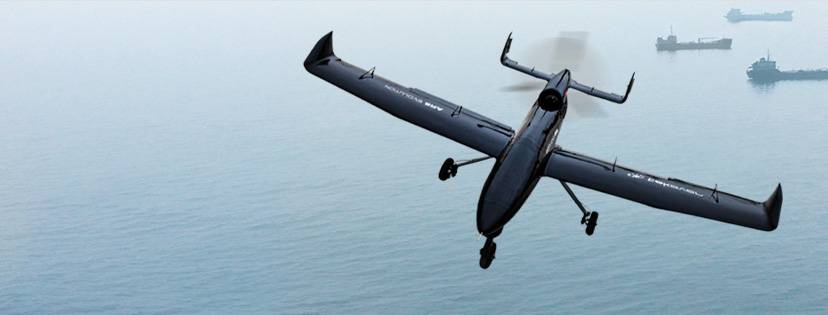
Shipborne Unmanned Aerial Systems: Extending India’s Maritime Reach

In keeping with the requirement to enhance the Indian Navy’s (IN) maritime intelligence, surveillance, target acquisition and reconnaissance (ISTAR) capabilities, the Indian Armed Forces’ Technology Perspective & Capability Roadmap, a vision document for capability building for the Indian Armed Forces, envisages the acquisition of shipborne Medium/High Altitude Long Range (MALE/HALE) Unmanned Aerial Systems (UAS) for ISTAR, equipped with maritime radar, satellite communication (SATCOM) as well as other surveillance, electronic/communications intelligence (ELINT/COMINT) and Electronic Support Measure (ESM) payloads. This requirement is a corollary to the previous alignment towards acquisition of shore-based UAS, to perform maritime ISTAR and related tasks.
Shore-Based Maritime UAS Platforms
The IN’s shore-based UAS capability is defined by three squadrons of Israeli-origin Heron and Searcher Mk-II UAVs, based in Kochi, Porbandar, and Uchipuli in Tamil Nadu.
In order to partially meet the incessant need for enhanced MaritimeDomain Awareness (MDA), the IN, in November 2020, began operating two MQ-9B (HALE) Sea-Guardians leased from the US for a period of one year. These machines are now being operated from Naval Air Station Rajali, in Tamil Nadu, with an extended lease period. The lease of the Sea-Guardians was deemed a precursor to the proposed purchase of 10 MQ-9B Unmanned Combat Aerial Vehicles (UCAVs) each for the three Services (30 in all) for a project cost of approximately US$ 3 billion. As per the statement of the Chief of Naval Staff in December 2022, the case is being progressed, albeit with a ‘possible rationalisation of numbers involved’. In spite of the leasing/ procurement of such shore-based HALE UAS, the numbers of these land-based UCAVs would not serve to meet the IN’s holistic requirements for responsive/immediate ISTAR requirements within the area of interest of a Naval Fleet or a Task Force, especially keeping in mind the fact that the IN is required to provide maritime security along both seaboards as well as discharge its responsibility as a key component of security in the Indian Ocean Region. Such responsive capability can only be met by shipborne UAS platforms.
IN Efforts for Acquisition of Maritime UAS
The IN has traditionally operated small shipborne Pilotless Target Aircraft (PTA), for use as airborne targets, with no ISTAR capabilities. In October 2007, the IN tested the Austrian Schiebel rotary-wing camcopter from INS Sujata, an offshore patrol vessel. However, no further progress at acquisition was evident.
The IN’s efforts at acquisition of shipborne UAS date back to February 2015, when a global Request for Information (RFI) was floated for procurement of 50 Naval Shipborne UAS (NSUAS) for Intelligence, Surveillance and Reconnaissance (ISR)/MDA, anti-piracy/anti-terrorism and assistance in search-and-rescue (SR). The RFI stated the requirement for such NSUAS to be capable of operating from surface ships as small as 50 m in length, which would include even some missile boats, thus possibly necessitating that such NSUAS (or a portion thereof) be small or even hand-launched. This RFI, however, did not yield any acquisitions.
The growing need for responsive shipborne UAS capability, therefore necessitated the formulation of a fresh RFI to meet the IN’s requirements of NSUAS.
RFI 2022. Apropos the above, the IN floated a fresh RFI for NSUAS on 28 June 2022, which envisages procurement of 40 NSUAS for performing the tasks as spelt out in the previous RFI. These are to be procured under the Buy (Indian-IDDM), Buy (Indian) or Make categories of the Defence Acquisition Procedure (DAP)-2020, thus ensuring a high indigenous content, in keeping with the theme of enhancing self-reliance in the Defence industry. Other salient aspects of the RFI are enumerated below.
- NSUAS should be capable of operation from ship/shore by day/night, in low visibility conditions. It should have autonomous/manual flight modes or a combination thereof, with a ‘return home’ capability. The UAS should preferably be capable of Vertical Take-off and Landing (VTOL)/ Automatic Take-off and Landing (ATOL) and be operable from all moving ships of length greater than 100m (which would allow operation from modern corvettes, frigates and all capital ships of the IN), as well as from beaches and unprepared littoral surfaces. The NSUAS system should be tropicalised for maritime use over an operating temperature band from -20 to +55º It should have launch/‘GPS-denied’ recovery capability in wind speeds up to 15 Knots (~ 25 feet/ second). The UAS should be capable of floatation to assist in recovery at sea.
- The UAS and its payloads should be modular, interoperable within the IN and should be easy to dismantle/repair at sea, thus facilitating repair/replacement, lowering logistics burden and yielding greater time on-station. Each system would be duplicated, including the UAS, Control Stations and Ship Data Terminals/Remote Video Terminals, thus increasing operational flexibility and enhancing redundancy. The UAS should be equipped with encryption-capable primary data-link and a secondary data-link.
- The UAS should be made of composite material and have low radar/acoustics signature, for low detection probability at sea.
- Each system should be accompanied by one set of detachable payloads, including Maritime Patrol Radar (MPR), surveillance (Electro-optical {EO} and Infra-Red {IR}) and communication relay equipment, ELINT/ COMINT, Automatic Identification System (AIS- used for Identification Friend or Foe-IFF) and Automatic Dependent Surveillance-Broadcast (ADS {B}- which provides real-time precision and shared situational awareness to pilots and air traffic controllers) payloads. The MPR should be capable of detecting/tracking small/medium/large targets with Radar Cross-Section (RCS) of 10/100/upto 1000 m2 respectively, by day/night and in light rain. The day camera/thermal imager (TI) should be capable of detection up to 20 Km by day/night respectively.
- The minimum endurance with basic payload (EO/IR and AIS) should be 10 hours, with a max operating altitude of 5000 feet (1524 m) above surface level, and a range of 100 Km. The UAS should be capable of operating for at least 100 hours per month throughout the year in normal operations and 16 hours per day/ 300 hours per month for a period of at least two months in intense operations.
Global Maritime UAS
Against the backdrop of the latest RFI, it would be prudent to examine global prospects in maritime UAS, as briefly profiled below.
- Maritime Heron (MH). Israeli Aerospace Industries (IAI), a long-time partner to the Indian Defence Industry, manufactures the MH UAS. The IN presently operates the land-based Heron as mentioned above. The MH is a MALE Maritime UAS that was successfully tested for induction by the UK in May 2022. It is capable of being launched from shore/ships. The MH has Line-of-Sight mission radius of 350 Km (>1000 Km in BLOS configuration). It has a max take-off weight (MTOW) of 1430 Kg, a useful payload capacity (UPC) of 490 Kg, endurance of 45 hours, loitering speed of up to 148 Kmph and service-ceiling of 35,000 feet. Payloads include EO-TV/IR/LASER range finder/designator, MPR, AIS, COMINT/ELINT, ESM, Acoustic/Magnetic Anomaly Detectors for Anti-Submarine Warfare and user-customized payloads. The UAS is also equipped with IFF, Traffic-Collision-Avoidance System, SATCOM and Airborne /Ground Data Relay for BLOS missions.
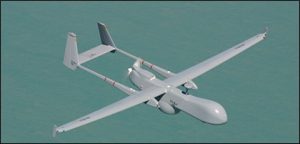
Maritime Heron: Source- iai.co.il
- Black Eagle 50. The Black Eagle 50 is a rotary-wing maritime UAS manufactured by Israeli firm Steadicopter for ISTAR/SR missions. The UAS has an MTOW of 35 Kg and UPC of 5 Kg. It has a cruising speed of 85 Kmph, endurance of 4 hours, service-ceiling of 10,000 feet and operating temperature range from -20 to +50ºC. It has a datalink range of 150 Km. The UAS can take off/land in wind speeds up to 25 Knots (45 Kmph). The 50E variant is electrically powered with an MTOW of 50 Kg, UPC of 15 Kg and service-ceiling of 18,000 feet. The 50H variant, with intermediate capabilities, is powered by a hybrid (fuel-electric) engine. Payloads include EO/IR, COMINT/ELINT, Synthetic Aperture Radar (SAR)/MPR, Light Detection and Ranging (LiDAR- use of directed LASER beams for targeting)/Video Detection and Ranging (ViDAR- use of video-assisted advanced stereoscopic imaging for target detection/tracking), communication relay, AIS and logistic payloads.
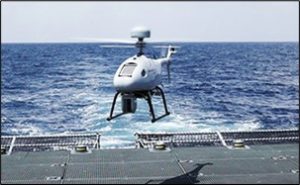
Black Eagle 50: Source- steadicopter.com
- AR-3 Long Range UAS. Tekever, a UK/Portugal-based firm, manufactures the AR-3 UAS- a compact, modular, catapult-launched, fixed-wing UAS designed for long-range ship-based maritime/land missions. It has an MTOW of 23 Kg, UPC of 4 Kg, endurance of 16 hours, cruising speed of 85 Kmph, service-ceiling of 11,800 feet and is capable of parachute/net/water recovery. It can be equipped with a beyond-line-of-sight (BLOS) data-link. The UAS is also available in the hybrid (VTOL+fixed wing) version (read more about hybrid UAS @ https://chanakyaforum.com/hybrid-uavs-the-advent-of-responsive-combat-capability/). The AR-5 is a medium-altitude, medium-endurance fixed-wing UAS optimized for ISR/patrol/SR and other critical maritime missions. It has an MTOW of 180 Kg, UPC of 50 Kg, endurance of 12 hours and cruising speed of 100 Kmph. It is SATCOM-enabled and capable of BRLOS (beyond radio line-of-sight) operation with effectively unlimited communications range. It is equipped with redundant critical flight systems, including twin engines and ATOL capabilities. Payloads of these UAS include multiple EO/IR sensors, MPR, SAR, SIGINT, AIS and rescue (life-raft deployment).


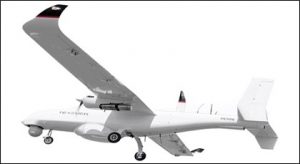
AR-3 UAS-Fixed Wing/Hybrid Versions & AR-5:Source-tekever.com
- MQ-8B Fire-Scout. US Company Northrop Grumman’s MQ-8B Fire-Scout is a VTOL maritime UAS that has ATOL capability from any aviation-capable warship/unprepared surface. It can mount a modular mission payload compatible with the US Navy’s tactical control system, with robust communications. The UAS has a combat range of 203 Km, MTOW of 1430 Kg and UPC of 320 Kg. It has an endurance of 8 hours, cruising speed of 200 Kmph and service-ceiling of 20,000 feet. The sensor payload includes a multi-mode MPR, EO/IR, moving target indicator and LASER target designator. The UAS is capable of operating as a UCAV, with Hellfire missiles/LASER-guided glide weapons. It has network-centric capabilities.
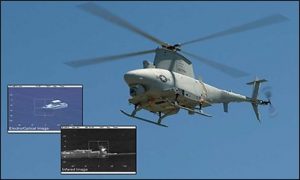
MQ-8B Showing EO and TI Feeds:Source-news.northropgrumman.com
India’s Efforts at Maritime UAS Development
While a number of private indigenous vendors are also likely to express interest in development of maritime UAS, some extant efforts at indigenous development are enumerated below.
- NRUAV. The IAI-Hindustan Aeronautics Limited (HAL) VTOL Naval Rotary Unmanned Aerial Vehicle (NRUAV) is a jointly developed rotary-wing UAS project to mount IAI’s Helicopter Modification Suite (HeMoS) on HAL’s Chetan (upgraded Chetak). The project was initiated in late 2008, to be completed within 4 years with a budget of ₹1163 crore. The UAS is capable of being launched from IN warships. The NRUAV is slated to have an MTOW of 2200 Kg, endurance of 6 hours, cruising speed of 100 Kmph, range of 150 Km and service-ceiling of 49,000 feet. The system payloads include EO, SAR and SIGINT and a possible MPR. While the project suffered technical setbacks in late 2010 due to inadequacies in landing/take-off capability from moving ships, resulting in rumours of cancellation of the contract, a full-scale prototype was reportedly developed by March 2019, and is reportedly awaiting clearance for preliminary design review.
- RUAV-200. HAL and IIT Kanpur have jointly developed the Rotary UAV (RUAV)-200- a coaxial, rotary-wing, fuel-engine UAS to meet requirements of the Indian Army for a Logistics Drone and as a maritime UAS for the IN. The RUAV has an MTOW of 200 Kg, UPC of 40 Kg, endurance of 3 hours and operating temperature range between -35 to 55 ºC. It will have a max range of 400 Km and service-ceiling of 20,000 feet. The RUAV mounts an EO day/night camera for maritime ISR and is equipped with video/data links for real-time LOS operations The relatively large size of the RUAV also makes its conversion into an armed variant a feasibility- a desirable feature for anti-piracy operations. The fully autonomous RUAV would have network-centric capabilities, thus making it ‘future ready’. HAL is presently in the process of assembling the RUAV, which should take to the skies this year.
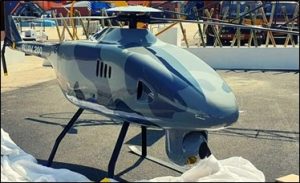
HAL’s RUAV-200: Source- theigmp.org
Conclusion
The large swathes of maritime domain that India has to safeguard/monitor demand responsive, capable and ‘mated’ surveillance capabilities, especially within our respective Naval fleets, whether they operate in the vicinity of India’s littoral waters or undertake expeditionary monitoring/security tasks far from our coasts. Apropos, shipborne Naval UAS with tailor-made capabilities for maritime ISTAR would represent force-m
Disclaimer
The opinions expressed in this article are the author’s own and do not reflect the views of Chanakya Forum. All information provided in this article including timeliness, completeness, accuracy, suitability or validity of information referenced therein, is the sole responsibility of the author. www.chanakyaforum.com does not assume any responsibility for the same.
Chanakya Forum is now on . Click here to join our channel (@ChanakyaForum) and stay updated with the latest headlines and articles.
Important
We work round the clock to bring you the finest articles and updates from around the world. There is a team that works tirelessly to ensure that you have a seamless reading experience. But all this costs money. Please support us so that we keep doing what we do best. Happy Reading
Support Us





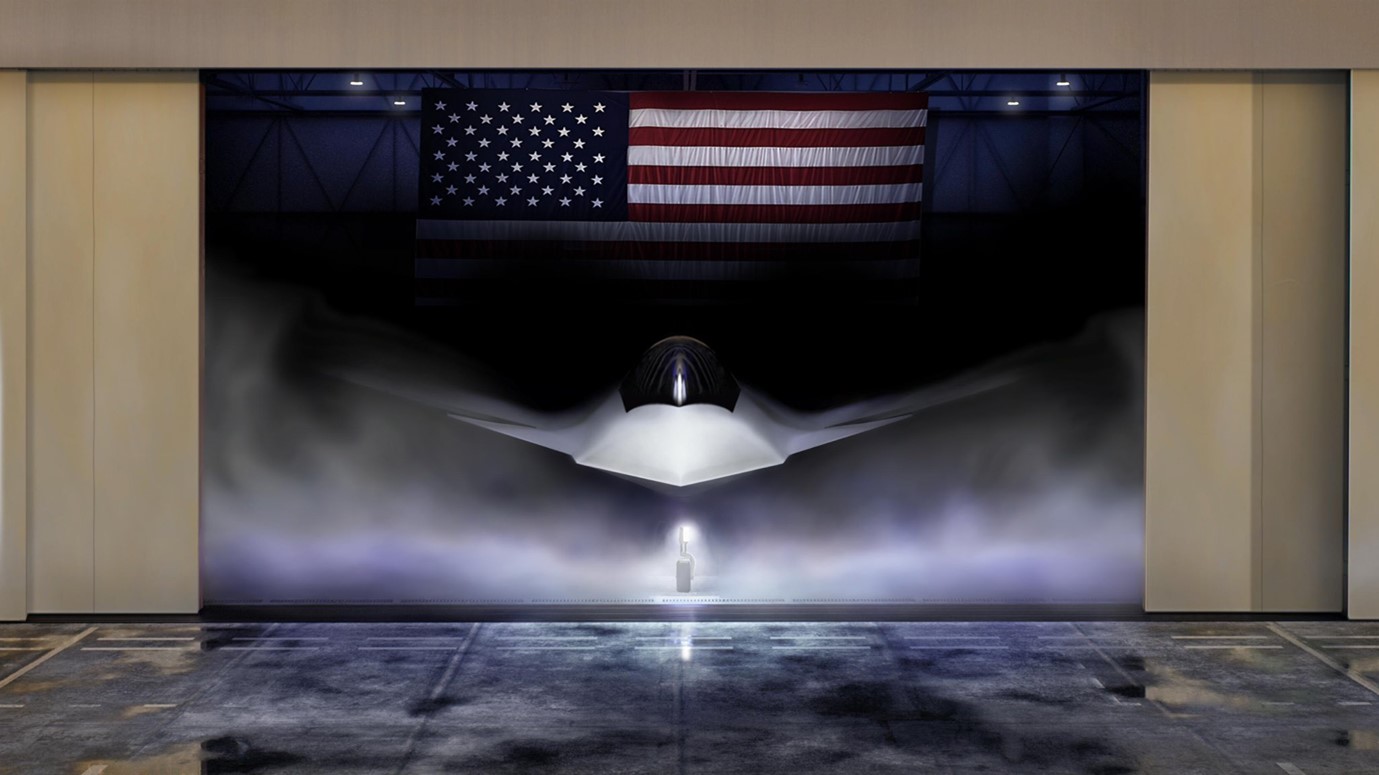
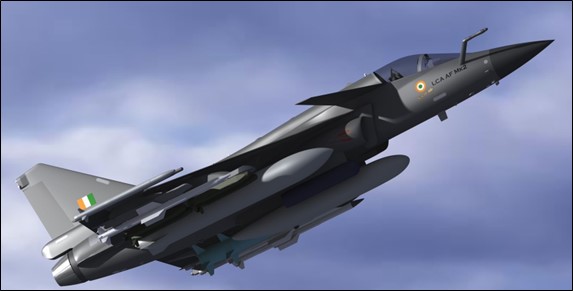
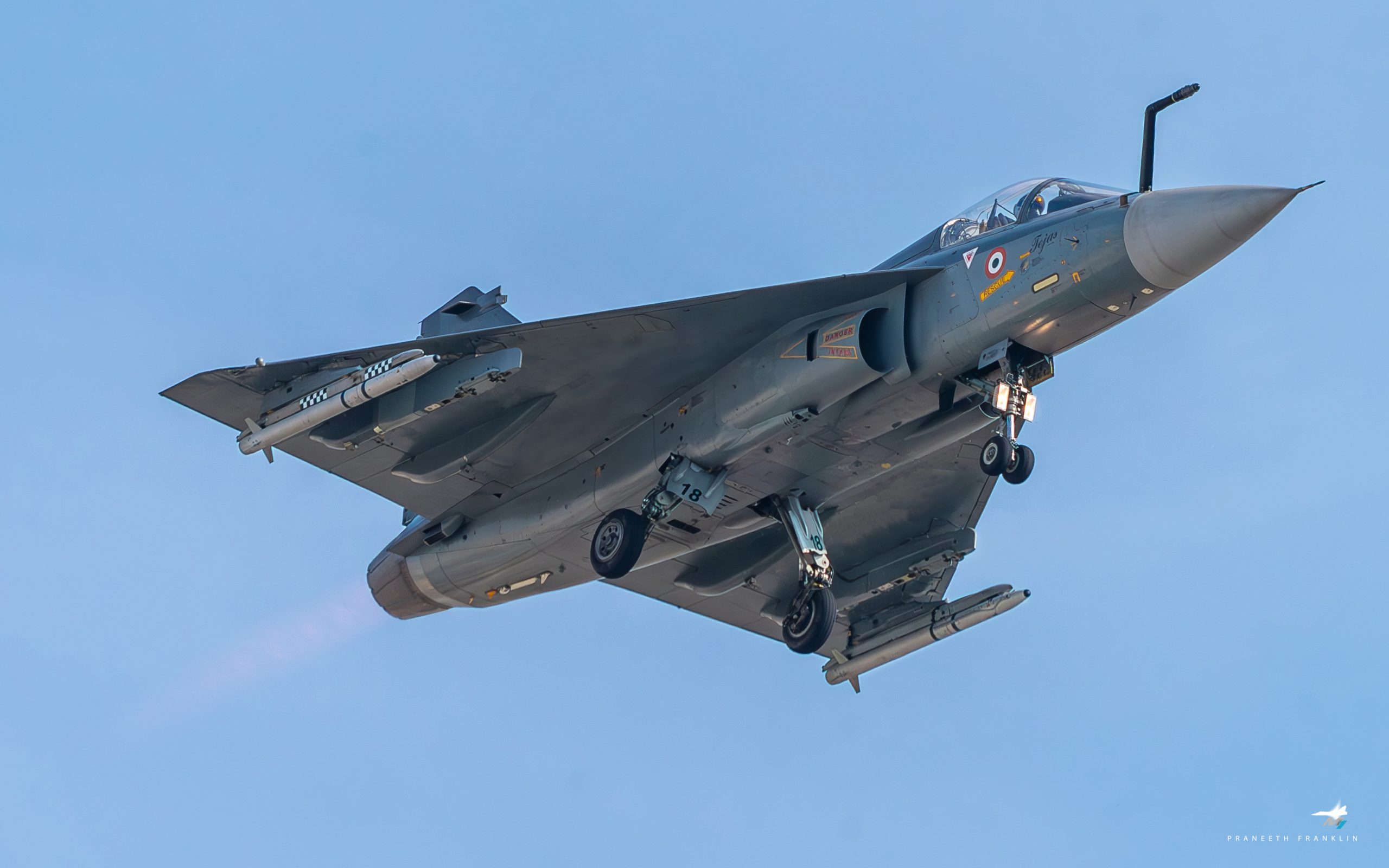
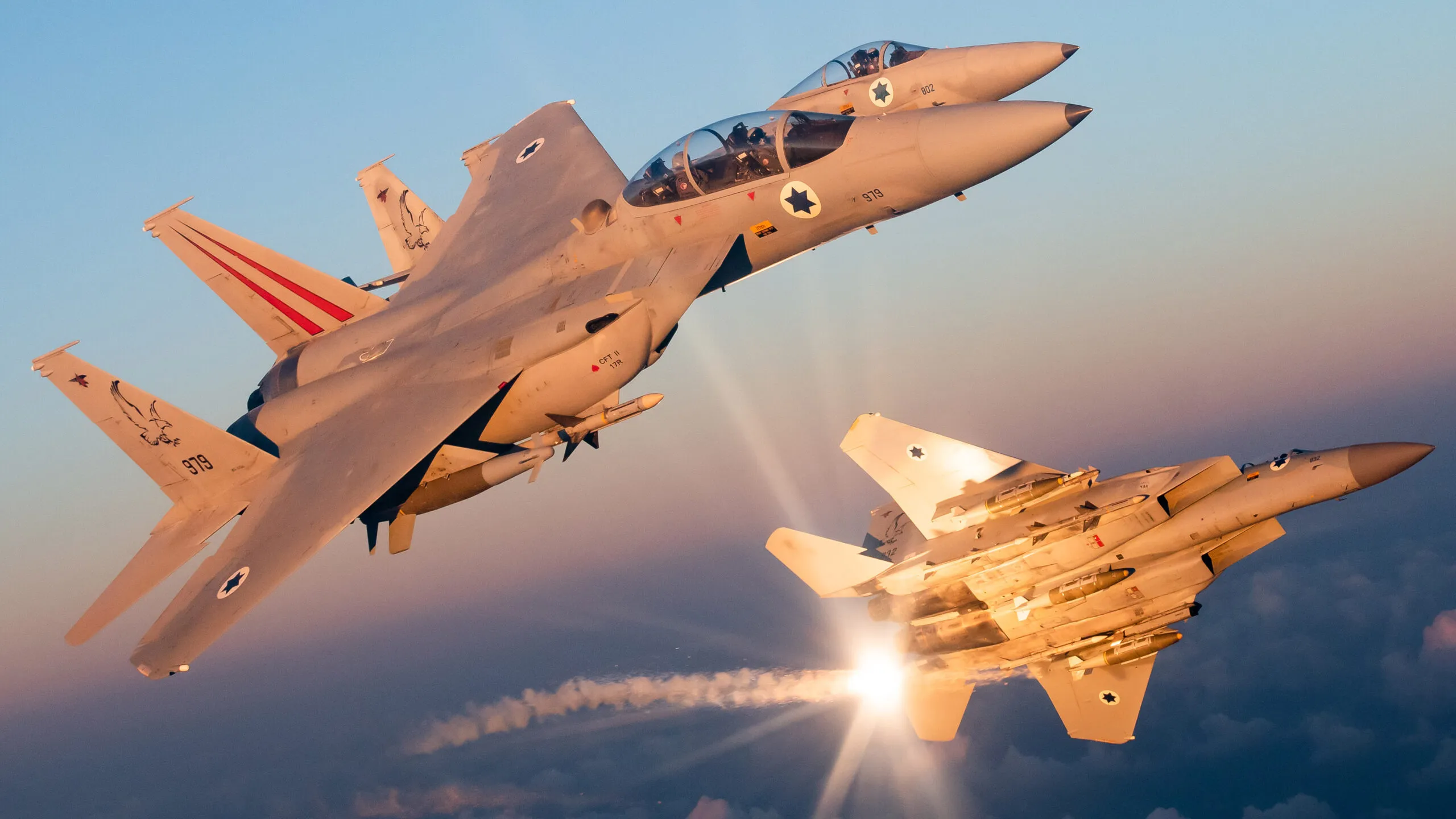



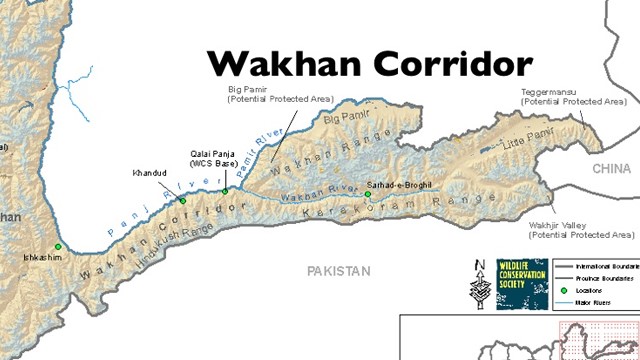
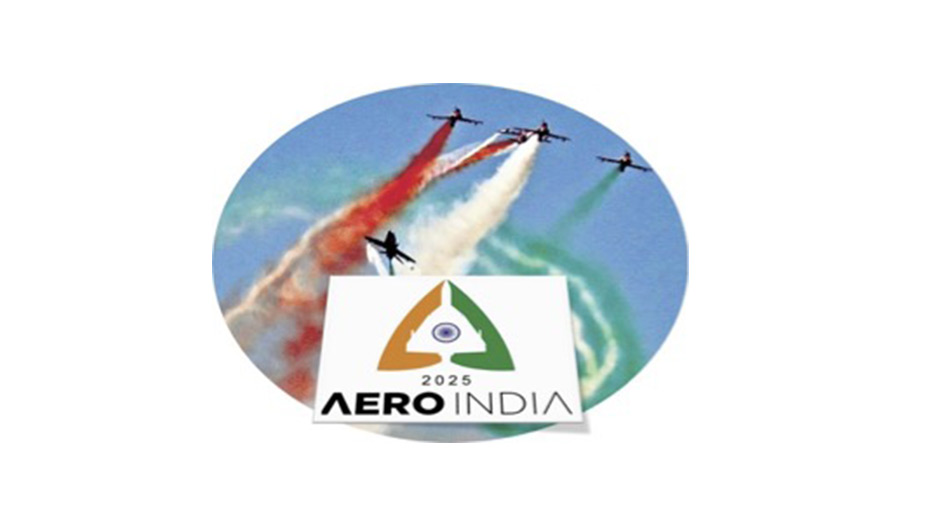

POST COMMENTS (0)